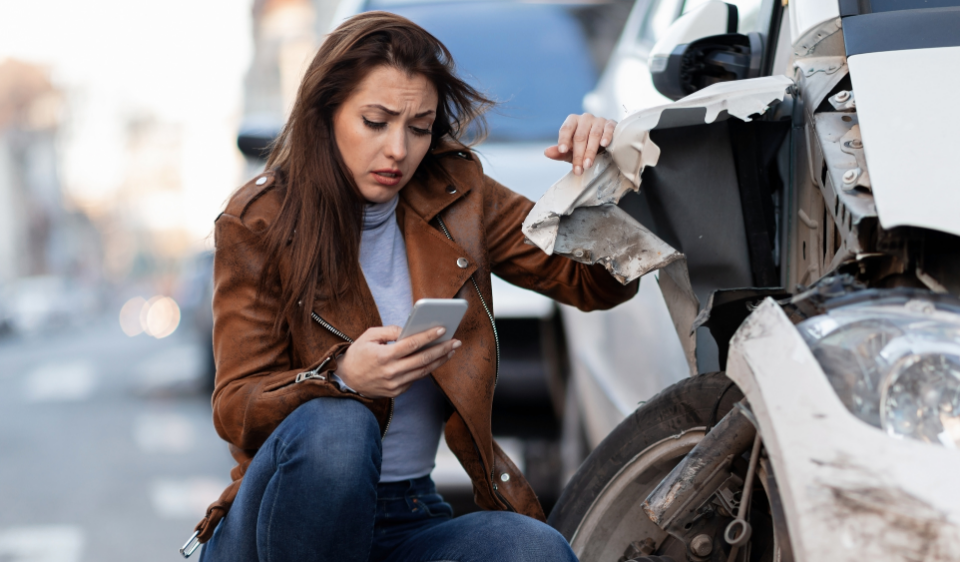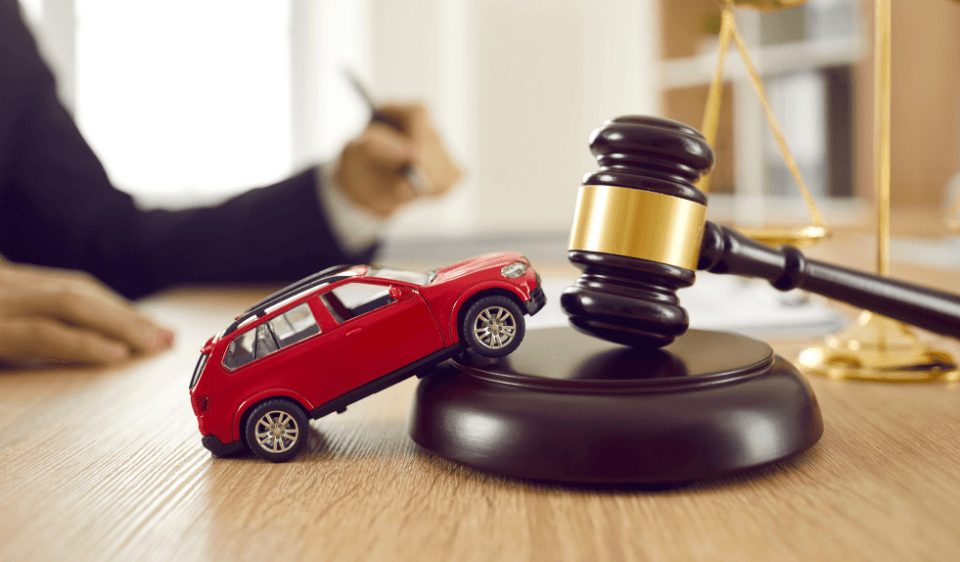Step 1: Ensure Immediate Safety (Right to Safety)
In the seconds after a car accident, your heart rate might surge, your adrenaline pump, and your mind race. Amidst this sudden chaos, it's crucial to focus on safety.
Prioritize Human Life
The sanctity of life reigns supreme. Before you inspect vehicular damage or exchange words with others, assess the well-being of everyone. Ensure no one is trapped or unconscious. In more severe accidents, it might be best not to move injured persons as it could exacerbate their injuries. Instead, call 911 immediately.
Move to a Safer Spot
NYC's bustling streets can become dangerous quickly, especially post-accident. If the vehicles are operable, consider moving them off the main road. Doing so not only protects you from oncoming traffic but also helps clear the path for other vehicles, reducing the risk of subsequent accidents.
Use Warning Signals
These are essential, especially at night or in poor visibility conditions. Your vehicle's hazard lights can be a beacon to warn oncoming drivers. If you have warning triangles or safety cones in your vehicle, place them approximately 30 feet behind the accident scene to give others ample notice.
Step 2: Protect Your Legal Interests (Right to Remain Silent)
Legal ramifications post-accident can be intricate and potentially long-lasting. Being aware of your words and actions is pivotal.
Avoid Admitting Fault
It's human nature to express sorrow or regret, especially when shaken. However, even casual apologies can be misconstrued as admissions of guilt in legal settings. It's crucial to remember that determining fault often requires a detailed investigation.
Limit Conversations
While you should cooperate with law enforcement, be wary of discussing the accident's specifics with others. Only provide essential, factual details when required. Remember, your words can be used against you in court or insurance claims.
Document Statements
In the age of smartphones, taking quick notes or even recording statements (with consent) has never been easier. Documenting the other party's words can provide a valuable reference later, especially if their story changes.

Step 3: Seek Medical Care (Right to Medical Attention)
Medical concerns post-accident are paramount. Even if you feel 'fine,' it's always prudent to be examined by a professional.
Immediate Care
The shock and adrenaline can mask pain. Some injuries, like internal bleeding or concussions, might not manifest symptoms immediately. Visit an ER or a clinic for a thorough check-up.
Document Everything
Every visit, prescription, and treatment should be documented meticulously. These records validate your claims, especially if you're seeking compensation for medical expenses.
Follow Up
A single medical visit post-accident is often not enough. Conditions can evolve. A headache days later might indicate a concussion or internal injuries. If in doubt, you should always consult a medical professional.
Step 4: Initiate the Insurance Process (Right to File a Claim)
Navigating the insurance landscape after an accident is daunting. Yet, understanding this process is essential for securing due compensation.
Understand Your Policy
Delve into the specifics of your insurance coverage. Understand terms like 'deductibles,' 'premiums,' and 'coverage limits.' If confused, schedule a call with your insurance agent for clarity.
Timely Reporting
Promptness is key. Most insurance companies stipulate a window within which accidents must be reported. Failing to adhere could complicate your claims.
Seek Fair Compensation
Understand that insurance adjusters often aim to minimize claim payouts. Arm yourself with repair estimates, medical bills, and other pertinent documents. This aids in negotiations, ensuring you get a fair shake.
Step 5: Consider Legal Representation (Right to Legal Representation)
The legal maze post-accident is complex. Navigating it requires expertise, making legal representation invaluable.
Free Consultation
Many lawyers provide a free initial assessment. This meeting can offer insights into your legal standing, potential compensation, and the journey ahead.
Choice of Representation
Your attorney is your advocate. Trust and comfort are crucial. Research potential lawyers, read reviews, and perhaps even seek recommendations.
Understanding Legal Fees
Lawyers often operate on contingency fees in personal injury cases, taking a percentage of the settlement. Ensure you're clear on all financial aspects before signing any agreement.
Step 6: Document and Preserve Evidence (Right to Document the Incident)
In legal and insurance arenas, evidence is king. Comprehensive documentation can be the difference between a successful claim and an uphill battle.
Photographs
Pictures provide a visual record. Capture wide shots of the scene, close-ups of damages, and any visible injuries. With smartphones, this process is straightforward but can be pivotal later.
Witnesses
Impartial third-party accounts can bolster your narrative. If there are witnesses, courteously request their contact details and a brief statement.
Keep Records
Beyond photos, keep a detailed accident log. This can include weather conditions, traffic patterns, and even your recollections. Couple this with tangible documents like police reports or medical records for a robust evidence portfolio.
When armed with knowledge and a proactive approach, you can effectively navigate the post-accident landscape in New York City.
Additional Important Considerations
While the steps mentioned above provide a comprehensive guide to navigating a car accident in New York City, there are a few other critical points you should keep in mind:
City-Specific Challenges: NYC presents unique challenges, from congested streets to varied parking regulations and ever-busy taxi cabs. Being aware of these factors can help you better navigate post-accident logistics and potential disputes.
Accident Reports: Always ensure that a police report is filed for the accident. This official document can be pivotal when filing insurance claims or if a legal dispute arises.
Witnesses: If there are any bystanders who witnessed the accident, try to gather their contact information. Their account might be valuable in case there's a disagreement about the events leading up to the crash.
Maintain Records: Beyond the immediate aftermath, maintain a detailed record of any subsequent medical treatments, car repair services, or other expenses related to the accident. This will be crucial when pursuing claims or legal action.
Avoid Rushed Settlements: In some cases, insurance companies might offer a quick settlement. While it might be tempting to accept and move on, such settlements might not adequately cover all your costs, especially if further medical treatments are required down the line.
Seek Professional Guidance
Car accidents can be taxing, both physically and emotionally. They introduce a flurry of considerations, from immediate medical concerns to potential long-term legal implications. Moreover, the nuances of New York City's traffic laws and insurance regulations add another layer of complexity to an already stressful situation. While this guide aims to provide a roadmap for the initial aftermath, the intricacies and variables of each individual situation can greatly vary.
Navigating this maze can often require expertise beyond a layman's understanding. Legal jargon, insurance terminologies, and the art of negotiation are aspects where professionals can make a marked difference.
Why Consider a Personal Injury Attorney?
Experience with Similar Claims: Attorneys have seen it all. Their experience with claims similar to yours can provide insight into how best to proceed.
Objective Perspective: Emotions can cloud judgment. An attorney brings an objective, dispassionate perspective to ensure you make decisions in your best interest.
Advocacy in Negotiation: Insurance entities often aim to limit their financial obligations. An adept attorney can champion your cause, ensuring that you obtain the compensation commensurate with your situation.
Resources for Investigation: In disputed situations, attorneys have the resources to conduct thorough investigations—be it recreating the accident scene, consulting with medical professionals, or interviewing witnesses.
Contingency Fees: Many personal injury attorneys operate on a contingency fee basis, meaning you might not owe them anything unless you win your case.
When in doubt, always consult a professional. Personal injury attorneys don't just offer legal counsel—they can be your advocate, standing beside you during one of life's most challenging moments. Their expertise extends beyond merely understanding the complexities of car accidents. From pinpointing liability to securing fair compensation for your damages and injuries, they provide invaluable support. This assurance of having a dedicated professional advocating for your rights can significantly lighten the weight of post-accident challenges, granting you the space to prioritize your recovery, both physically and monetarily.
Conclusion: Navigating Post-Accident Challenges in NYC
Car accidents, especially in a city as dynamic as New York, can be overwhelming and disorienting. The immediate aftermath often blends shock, concern, and a rush of logistical considerations. It's not just about the moment but the days, weeks, and sometimes even months that follow. Insurance claims, potential legal battles, and health concerns loom large.
But with the right knowledge and a methodical approach, you can chart a path that ensures the safety of everyone involved, protects your legal interests, and sets you on the road to recovery—both physically and financially. The streets of NYC, with all their unpredictability, are a testament to the city's resilience and spirit. With the insights from this guide in hand, you can traverse the post-accident landscape with a sense of assurance and understanding.
Remember, accidents happen. But how you respond, the choices you make in those critical moments, and the days that follow can significantly impact the outcome. Stay informed, stay calm, and always prioritize the well-being of yourself and others. Through understanding and preparation, you can turn a challenging situation into a testament to your resilience and strength.

